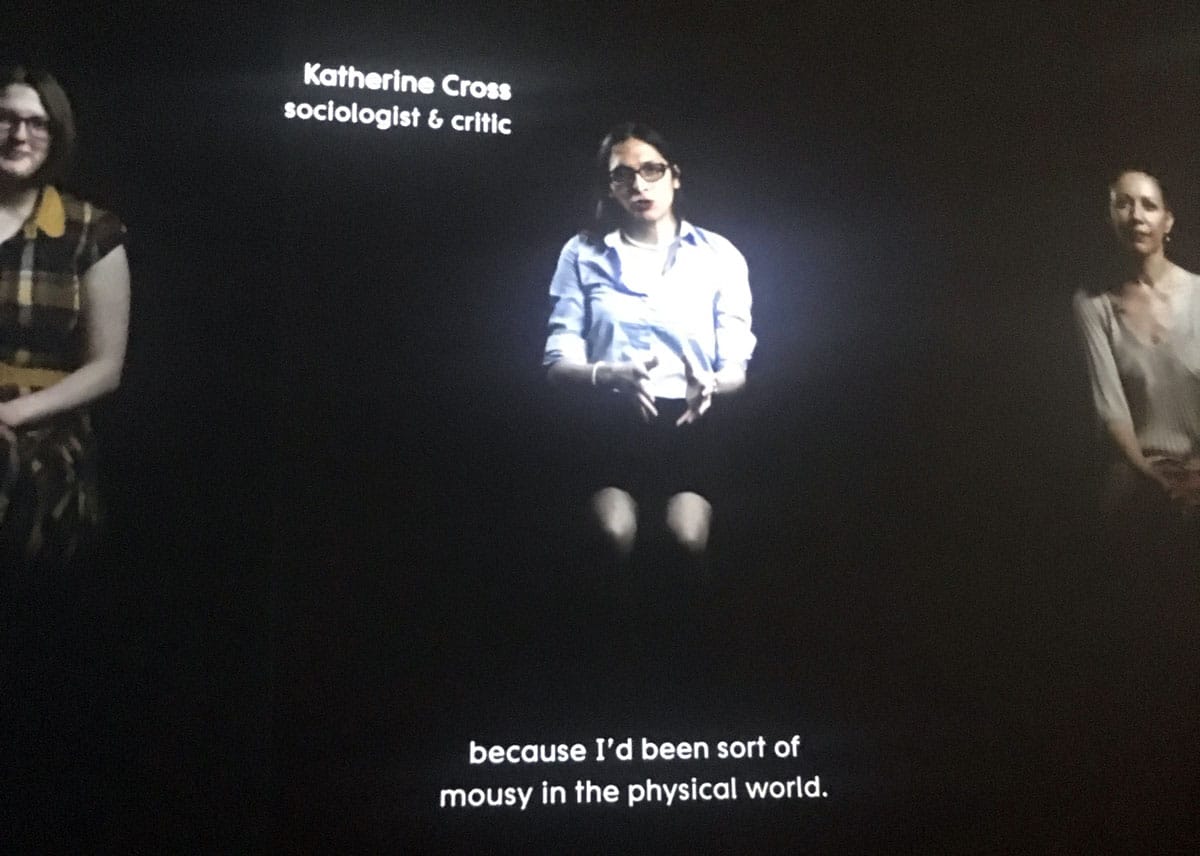Storytelling & Independent Games
Over the duration of ten weeks, we explored a variety of independent games while learning how to build our own in Unity. I discovered that I am intrigued by interactive storytelling, especially when an 8 bit aesthetic is incorporated. The low-fi visuals disarm the player and there is an element of humour and nostalgia.
One of my favorite games is Dys4ia by Anna Anthropy, also known as Auntie Pixelante. Dys4ia is an abstract, autobiographical game that Anthropy developed to recount her experiences of gender dysphoria and hormone replacement therapy. I found playing the game to be possibly more affecting than listening to a story or watching a film because Anthropy’s dilemmas and frustrating tribulations become the players’ experience for the duration of game. Anthropy’s story still resonates with me more than a year later.

While I was at the V&A last week, I took the opportunity to visit the Videogames: Design/Play/Disrupt exhibition which explores the design and culture of contemporary videogames since the mid-2000s. The internet, connective technologies, access to powerful software, and the invention of social media have changed the way games are designed, played, discovered, and discussed.
My favorite areas of the exhibition were the disrupt and play areas. Games are no longer only produced by big studios with large teams of designers, producers, storywriters, and developers. Games can be developed independently, allowing the voices of non-cisgender white males to be heard.
In the disrupt area, there was a wonderful multi-panel video presenting some of the people involved in designing and promoting independent games such as hybrid developer/designers Tanya De Pass, Rami Ismail, and Nina Freeman. Sociologist and critic Katherine Cross and USC Games Professor Richard Lemarchand are also featured. Most of these people were new to me and I intend to research them in more depth at a later date. I was surprised Anita Sarkeesian was not profiled as she has been famously vocal about sexist tropes in mainstream video games.

It was fantastic to see a game like this – simple, fun, and made with accessible hardware and software. I have never thought about an LED strip as a gaming device. Brilliant! Line Wobbler won the Game Design Award at IndieCade 2015 in Los Angeles, and the Best Game Design, Best Presentation, and the Audience Awards at Sense of Wonder Night at the Tokyo Game Show 2016. Well done Robin!
Back in the spring of 2017, I made a game for my final project in the experimental game design class. It’s not biographical – except I did (do?) a lot of emotional eating in graduate school. It’s called Hungry Ball and is inspired by Pac Man. It’s free at itch.io. Let me know what you think!